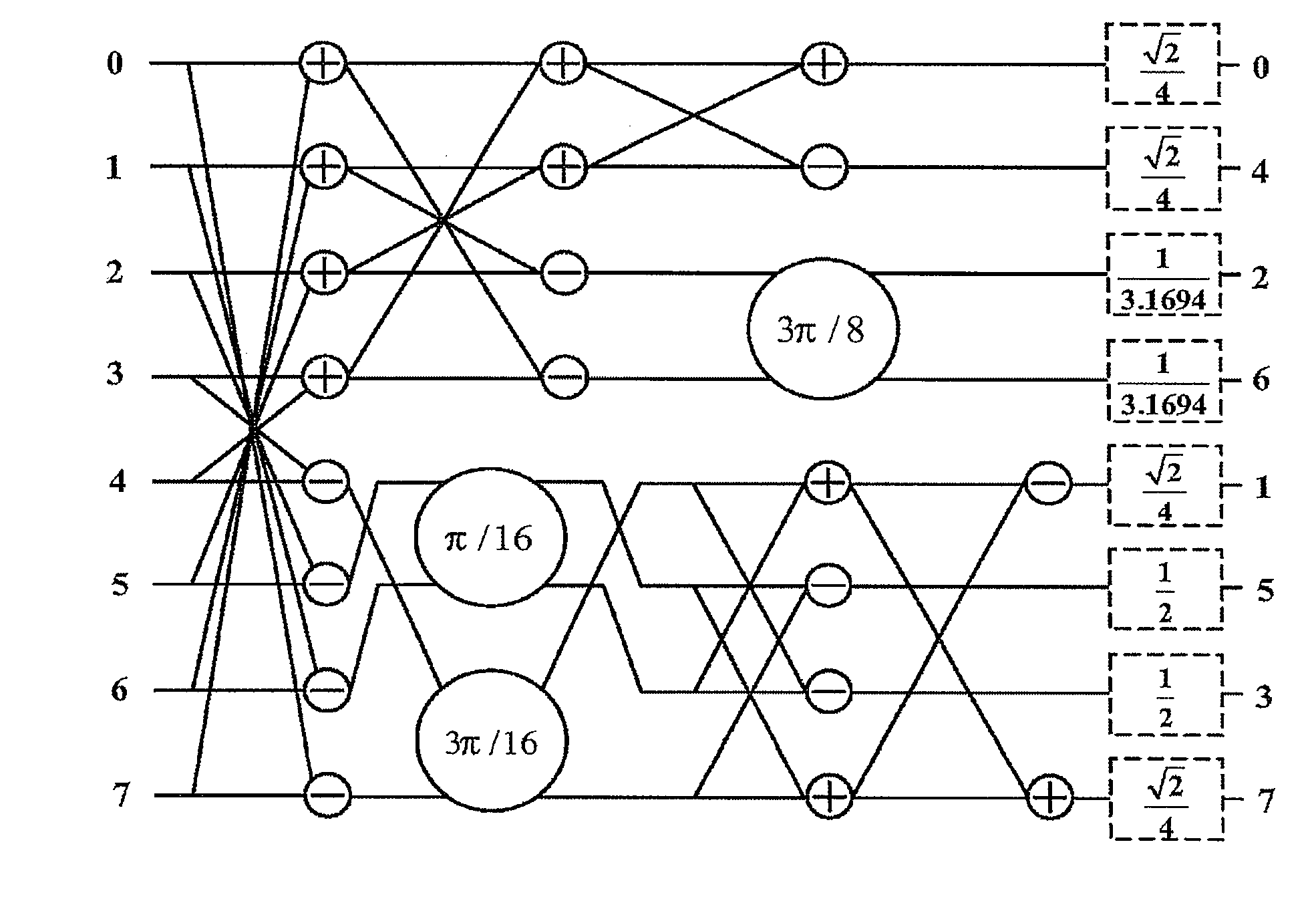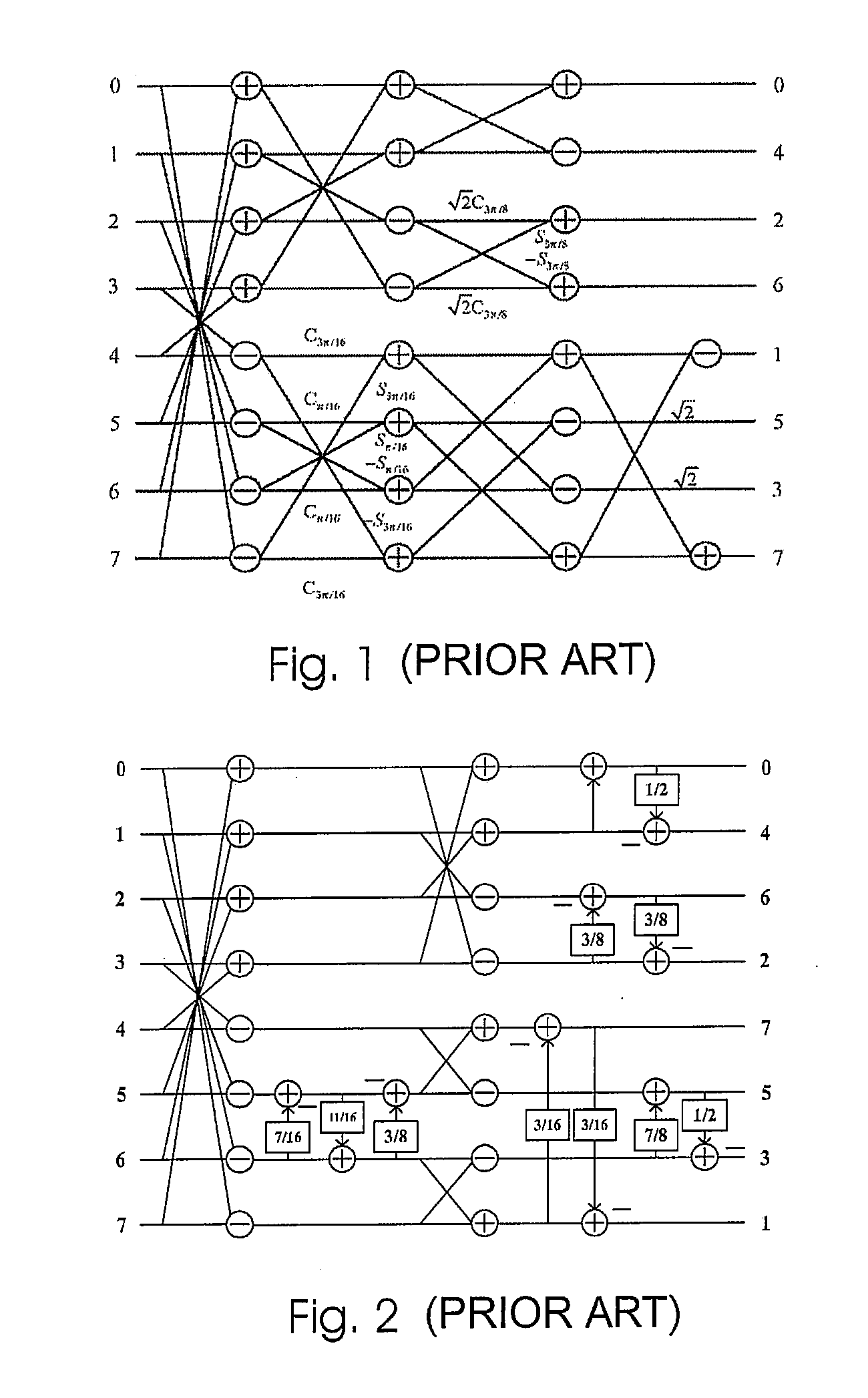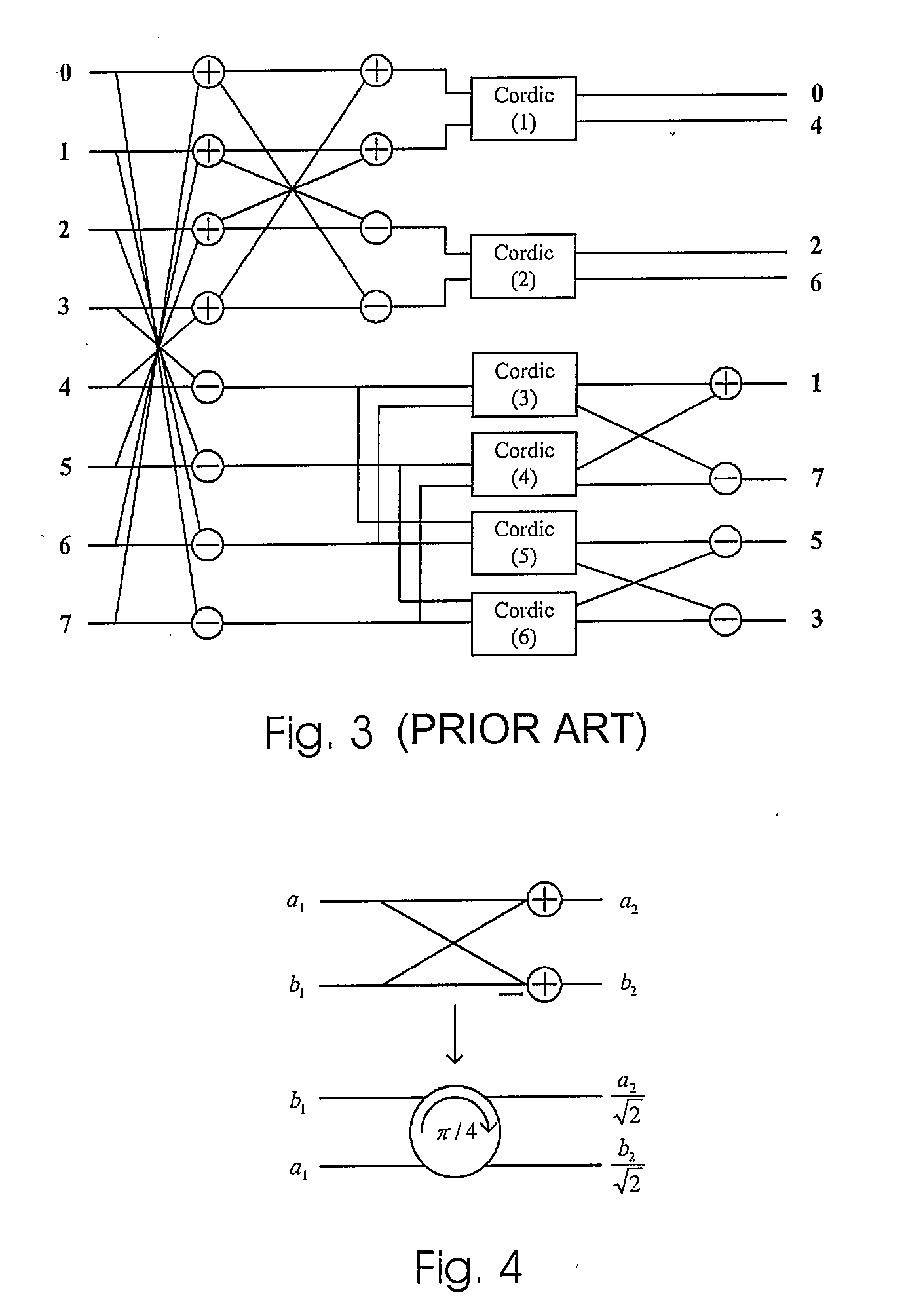Method and circuit for performing cordic based loeffler discrete cosine transformation (DCT) for signal processing
a discrete cosine and signal processing technology, applied in the field of methods and circuits for performing a discrete cosine transformation and a circuit, can solve the problems of reducing the computational complexity of bindct, consuming about 40% of the power, and suffering from about 2 db loss in psnr (peak signal to noise ratio)
- Summary
- Abstract
- Description
- Claims
- Application Information
AI Technical Summary
Problems solved by technology
Method used
Image
Examples
Embodiment Construction
[0039] Accordingly, the present invention provides a method and a circuit for obtaining a high quality DCT, wherein the method can be implemented with a minimum number of shift and add operations without loss of quality.
[0040] The present invention provides a method for performing a DCT using a coordinate rotation digital computer method (Cordic method), wherein all relationships and butterfly stages for carrying out the Loeffler DCT are solely expressed as Cordic transformations and the Cordic transformations are carried out by a combination of shift and add operations with compensational steps in a final quantizer without multiplication operations.
[0041] The present invention also provides a circuit for the method for performing a DCT using a coordinate rotation digital computer method (Cordic method) described above.
[0042] Based on the information and the accompanying figures disclosed in the present invention, those skilled in the art would understand the advantages and would...
PUM
 Login to View More
Login to View More Abstract
Description
Claims
Application Information
 Login to View More
Login to View More - R&D
- Intellectual Property
- Life Sciences
- Materials
- Tech Scout
- Unparalleled Data Quality
- Higher Quality Content
- 60% Fewer Hallucinations
Browse by: Latest US Patents, China's latest patents, Technical Efficacy Thesaurus, Application Domain, Technology Topic, Popular Technical Reports.
© 2025 PatSnap. All rights reserved.Legal|Privacy policy|Modern Slavery Act Transparency Statement|Sitemap|About US| Contact US: help@patsnap.com



